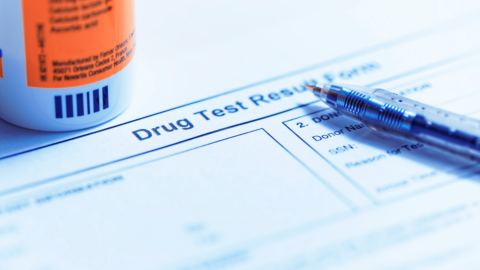Known for reducing withdrawal symptoms and helping people on their journey, buprenorphine is a big help for many facing opioid addiction. But one question always comes up: How long does buprenorphine stay in your system?
If you’re in recovery or supporting someone who is, knowing how buprenorphine works in your body will help you feel informed and in control. This guide will explain how buprenorphine is processed, why the timeline matters, and what to expect at each stage.
What Is Buprenorphine, and How Does It Work?
Buprenorphine is a partial opioid agonist, meaning it attaches to the same brain receptors as opioids like heroin or prescription painkillers, but with a unique twist.
Instead of giving a full “high,” it partially activates these receptors to reduce cravings and withdrawal symptoms—without creating the same euphoria or risk of overdose.
Why Buprenorphine’s “Stay Time” Is Important
Understanding how long buprenorphine stays in the body can be useful for several reasons:
- Managing withdrawal symptoms: Knowing how long effects last can help you understand when symptoms might return.
- Avoiding drug interactions: Some medications can interact with buprenorphine, so it’s good to know when it’s still in your system.
- Drug testing: If you’re undergoing routine testing, knowing buprenorphine’s detection times might be helpful.
How Long Does Buprenorphine Stay in the Body?
The answer depends on several factors: the form of buprenorphine, your metabolism, and even your liver health.
Buprenorphine Detection Times by Administration Method
- Sublingual (Under the Tongue): If you take buprenorphine as a tablet or strip under your tongue, it typically stays in your system for 5 to 8 days (120–175 hours). This longer duration is due to its steady release, which helps keep withdrawal symptoms at bay.
- Transdermal Patch (Skin Patch): The patch provides a slow, even release, staying in your body for around 5 to 6 days (130 hours). This can be a convenient option if you prefer not to take a daily dose.
- Buccal (Dissolved in Cheek): When taken as a buccal film in your cheek, buprenorphine stays around for about 6 days (up to 140 hours), similar to the sublingual form, offering stable effects over a few days.
- Intravenous (IV) Injection: With IV administration, buprenorphine has a shorter duration, lasting about 11 hours. This form is less common in long-term treatment but is sometimes used in specific medical situations.
- Extended-Release Subcutaneous Injection (e.g., Sublocade): This long-acting injection lasts the longest by far—up to 10 months. It provides a slow, steady release that’s especially helpful in keeping withdrawal and cravings under control with fewer doses.
Buprenorphine’s Half-Life and Detection Times
A medication’s half-life is when it takes half of the drug to leave the bloodstream. Buprenorphine’s half-life varies by form and is notably longer than many other medications, lasting 24 to 42 hours on average for the sublingual (under the tongue) tablet or strip. This means it can take around 5 to 8 days for buprenorphine to fully clear from the body after the last dose.
For reference, most over-the-counter medications have a much shorter half-life of 6 to 12 hours. Buprenorphine’s extended half-life means it remains in the system longer, providing a steadying effect that helps reduce withdrawal symptoms and cravings without the need for frequent dosing.
In individuals with moderate to severe liver impairment, the half-life is even longer—up to 57% longer in severe cases—making it detectable for extended periods.
This longer half-life allows buprenorphine to stay in your system for several days after your last dose, providing a steadying effect.
Buprenorphine Detection by Test Type
Here’s a breakdown of detection windows by test type:
| Test Type | Detection Timeframe |
| Blood Test | Up to 2 days |
| Urine Test | Up to 7–10 days |
| Hair Test | Up to 90 days |
Note: These are general timeframes, but results vary based on individual factors like metabolism, liver health, and dosage.
Factors That Influence Buprenorphine’s Duration
No two people process buprenorphine in precisely the same way. Here are some factors that can affect how long it stays in your body:
- Metabolism: If you have a faster metabolism, your body may clear buprenorphine more quickly.
- Liver Function: Buprenorphine is processed in the liver, so those with liver conditions may find it stays in their system longer.
- Dosage and Duration: Higher doses or longer-term use can lead to extended detection times.
- Age: Age also plays a role, as older adults tend to metabolize medications more slowly.
These factors all impact how your body processes buprenorphine, so remember that your experience might differ from others.
Frequently Asked Questions About Buprenorphine
How Long Does Buprenorphine Show Up on a Drug Test?
On a standard drug panel, buprenorphine may or may not appear, as not all panels include it. Specialized tests, however, can detect buprenorphine up to 7–10 days in urine and longer in hair samples.
Why Does Buprenorphine Stay in the System So Long?
The long half-life of buprenorphine allows it to build up and stay at stable levels in the body, which is why it’s so effective in helping people avoid the cycles of withdrawal. This stability is part of what makes buprenorphine such a practical option for those in recovery.
Will Buprenorphine Cause Withdrawal if I Stop Taking It?
If buprenorphine is stopped suddenly, withdrawal symptoms may occur, but they are typically less severe than those caused by full opioids. For a smoother transition, it’s usually best to taper down under medical guidance to minimize any discomfort.
Key Takeaways
- Buprenorphine usually stays in the body for around 7–10 days.
- Multiple factors affect its duration in your system, including liver health, age, and dosage.
- Understanding buprenorphine’s duration can help with managing withdrawal symptoms, understanding drug interactions, and handling drug testing confidently.
Find Your Path with Compassionate Support
If you’re considering or currently using buprenorphine as part of your recovery journey, having the proper support can make all the difference. QuickMD provides online consultations for opioid addiction and other health needs, allowing you to access care on your terms and at your own pace.
Learn more about QuickMD’s addiction support services here and start building a healthier future today.
Your path to recovery is unique—let’s make it one of knowledge, empowerment, and support.




